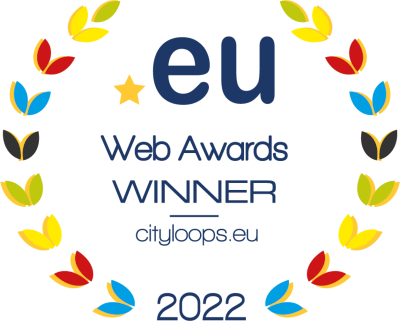What is a Circular City?
The launch of the European Green Deal puts the concept of circular economy at the centre of efforts to transform the European Union into a fair and prosperous society, where economic growth is decoupled from resource use and environmental harm. In light of the socio-economic impact of the current crisis, the road to recovery is an opportunity to rethink the way we do things – to build back in a way that ensures a more resilient future. A systemic shift to a regenerative economic model is fundamental to achieving climate neutrality and keeping resource consumption within planetary boundaries. It requires citizen behaviour change and multilevel governance of the transition. Cities and regions have a central role to play in achieving this.
In CityLoops, the key partner supporting cities in achieving this systemic shift was Metabolism of Cities, through the development of the circularity assessment methodology at a sector level (for both biomass and construction) and at a city-wide level. In addition, MoC developed a Circularity Hotspot Analysis, a method for cities to identify urban circularity hotspots for four material categories. Through their work with MoC, the CityLoops cities produced a lot of data and gained a lot of valuable insight about the state and progress of the circular economy on their territory. All of these results have been compiled in MoC's Data Hub which serves as a digital library on the state of the circular economy of the CityLoops cities, providing visitors with access to key documents, an overview of the circular context and activites in each city, and data on material flow.
Why Circular Economy?
The environmental benefits – less emissions, improved health and liveability, the preservation of nature – of the circular economy have been well documented. Circular thinking can also lead to cost reductions, new revenue streams and more effective risk management. The Ellen MacArthur Foundation concludes that the transition to a circular economy can produce new business and economic opportunities and lead to a 4% rise in employment.

A CityLoops vision for a Circular City
"A circular city is one that promotes the transition from a linear to a circular economy in an integrated way across all its functions, in collaboration with citizens, businesses and the research community. It fosters business models and economic behaviour which decouple resource use from economic activity by maintaining value and utility of for as long as possible, in order to close material loops and minimise harmful resource use and waste generation. Through this transition, cities seek to improve human wellbeing, reduce emissions, protect and enhance biodiversity, and promote social inclusion, in line with the Sustainable Development Goals."

Why Cities?
Cities are the largest consumers of energy and materials, but at the same time they offer an opportunity to manage resources better and efficiently. They are cradles of innovation and socio-economic transformation with an enormous potential to lead the transition to a circular economy. Local and regional governments manage a number of key sectors in urban areas, such as mobility and waste management, and are ultimately responsible for controlling land use and urban planning. Their public procurement and investment budgets can also play a key role in driving demand for circular products and services.
Circular Economy in the EU
The European Union (EU), with 75% of its citizens living in urban areas, has seen the potential the circular economy can have for its cities and has made the Circular Economy Action Plan one of the cornerstones of the European Green Deal. This plan aims to promote circular economy processes, foster sustainable consumption and ensure that resources are kept within the EU economy for as long as possible. The plan has also identified which sectors have the highest potential for circularity. These include electronics and ICT, plastics, textiles, construction and buildings, water and nutrients, and food.

